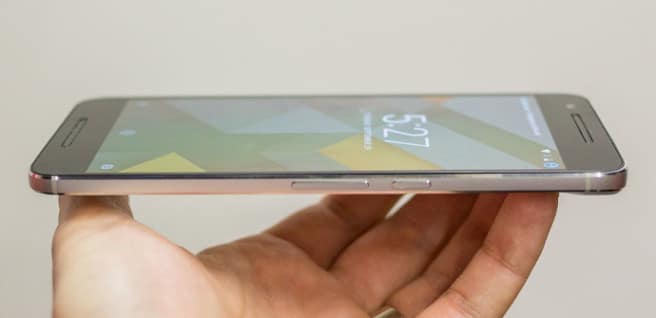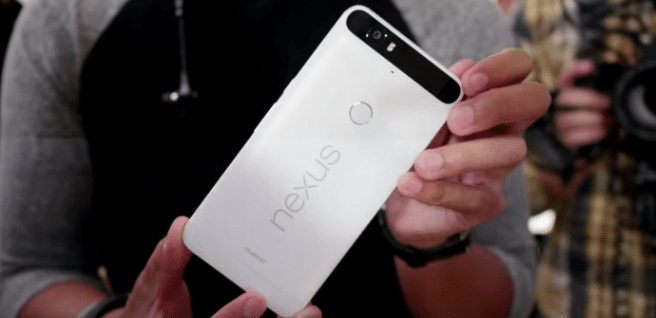
It is no secret that despite its great technical specifications, the Nexus 6 was one of the devices in the range that has received a colder reception from users and even from Google It was recognized a few months ago that sales had not been up to expectations. What are the strengths of his successor to conquer those who the phablet of Motorola had not managed to seduce? We review all the improvements that the Nexus 6P.
-
Has metal casing
The plastic casing is becoming less and less acceptable in a high-end smartphone and little by little practically all manufacturers are adopting the aluminum unibody body or the glass and metal combinations in their flagships. The Nexus 6, like others, it was an intermediate step, with a plastic housing with a metal profile, but with the Nexus 6P At last we have a Nexus device that has nothing to envy the iPhone 6s Plus or any other of the higher level phablets.
-
It has a fingerprint reader
Another trend that has been irresistible in the end in the high-end has been to incorporate a fingerprint reader and this is another point in which the Nexus 6P strictly complies with the standard. The fact that it arrives with Android Marshmallow, which natively supports this type of technology is an extra point in favor, since it is what will really allow us to get the most out of it.
-
It is narrower and thinner, although still just as long
One of the characteristics of Nexus 6 The most reluctant thing aroused from the beginning was its size, something logical since despite the fact that phablets are a type of device sought after by more and more users, it seems that 6 inches is still an excessive size for many. The Nexus 6P improves in this sense, but not in all points: it is much narrower (7,78 cm versus 8,3 cm) and much finer (7,3 mm vs 10,1 mm), but the length is the same (15,93 cm).

-
Its screen is smaller, but has the same resolution
As we have just mentioned, there are more and more lovers of phablets but the limit seems to be for most in the 5.7 inches of the Galaxy Note and that's where the big launches have been lately. Google has taken note of this trend as well and its latest phablet has joined it. The resolution, however, has not decreased and is still Quad HD (2560 x 1440) which, logically, causes the pixel density to have gone up a bit (to 518 PPI).
-
Offers an eight-core processor and more powerful graphics processor
Although if we look only at the CPU frequency, the Snapdragon 805 of the Nexus 6 would not have much to envy the Snapdragon 810 of the Nexus 6P, there is a jump in power in benchmarks, in addition to having a more efficient eight-core big.LITTLE architecture and a more current GPU, the Adreno 430. The RAM memory, on the other hand, is identical (3 GB). Altogether, in any case, we should see a clear performance improvement.
-
Can be purchased with up to 128GB
Although the Nexus 6 I was already taking the crucial step of making available to us 32 GB of internal memory in the most basic model, something essential when you do not have a micro-SD card slot that allows us to expand the memory externally, with the Nexus 6P Another step is taken that is almost as important and that is to give the option of having up to 128 GB of hard disk to those that need more space.

-
Your camera is equal in number of megapixels and yet performs better
The 13 MP of the Nexus 6 It seemed that they were beginning to fall short in a sector in which it is already common to see 16 MP or even 20 MP sensors. It may have disappointed many, therefore, to see that not only has there been no evolution, but, on the contrary, even a step backwards has been taken. Keep in mind, however, that the improvement is in the increase in pixel size. In case anyone still has doubts, the laboratories D They have already awarded the second position in their ranking.
-
A bigger battery that charges faster
Although the screen has decreased and so has the thickness, the battery of the new Nexus 6P is even bigger than its predecessor (3450 mAh vs 3220 mAh). If we add to this the Android Marshmallow improvements in this section, we should find ourselves before a device with fantastic autonomy. A plus is that its USB type C will also allow us a faster charge.
A look at the two on video
We finish by offering you the possibility to take a look at the Nexus 6P along with the Nexus 6 in one of those first hands on that have seen the light and that gives us the possibility, always to thank, to put in images a few of those differences that we have already illustrated with figures.
What do you think of this new Nexus 6P? Does it convince you? We remind you if you still have any doubts that you have all the information in our coverage of your presentation.